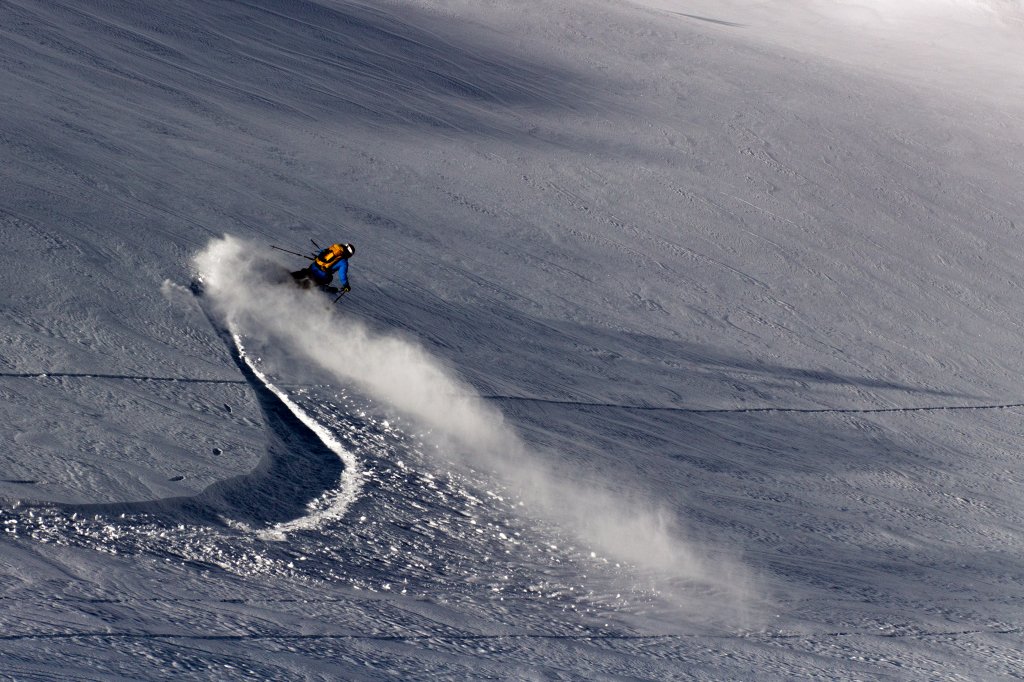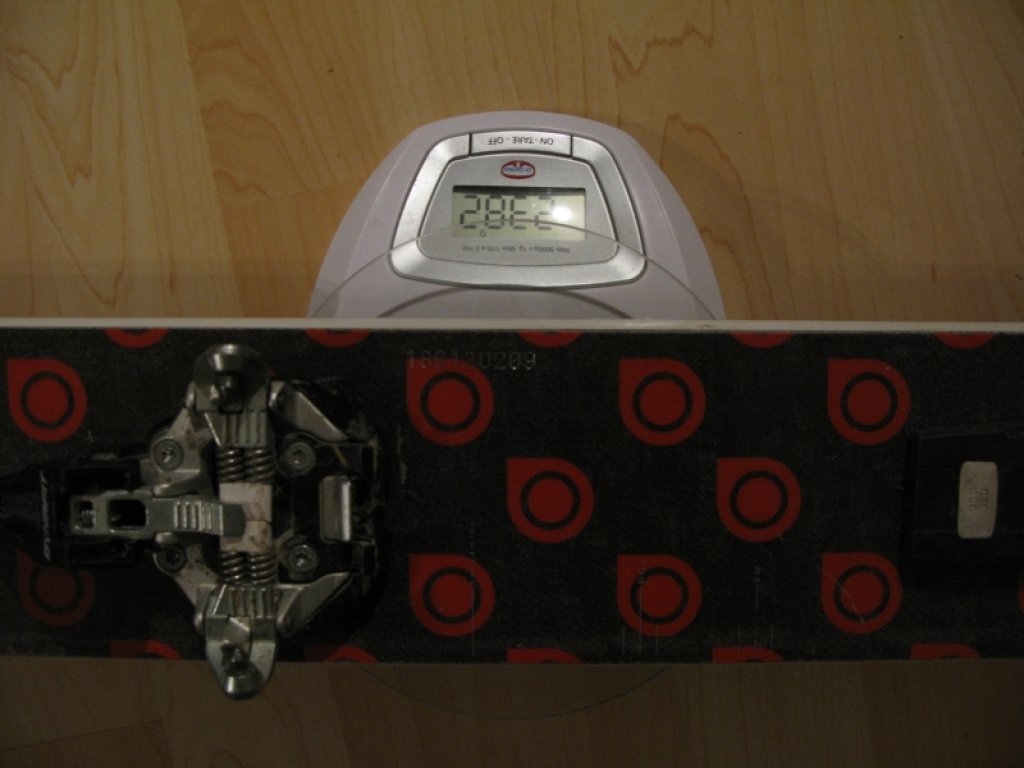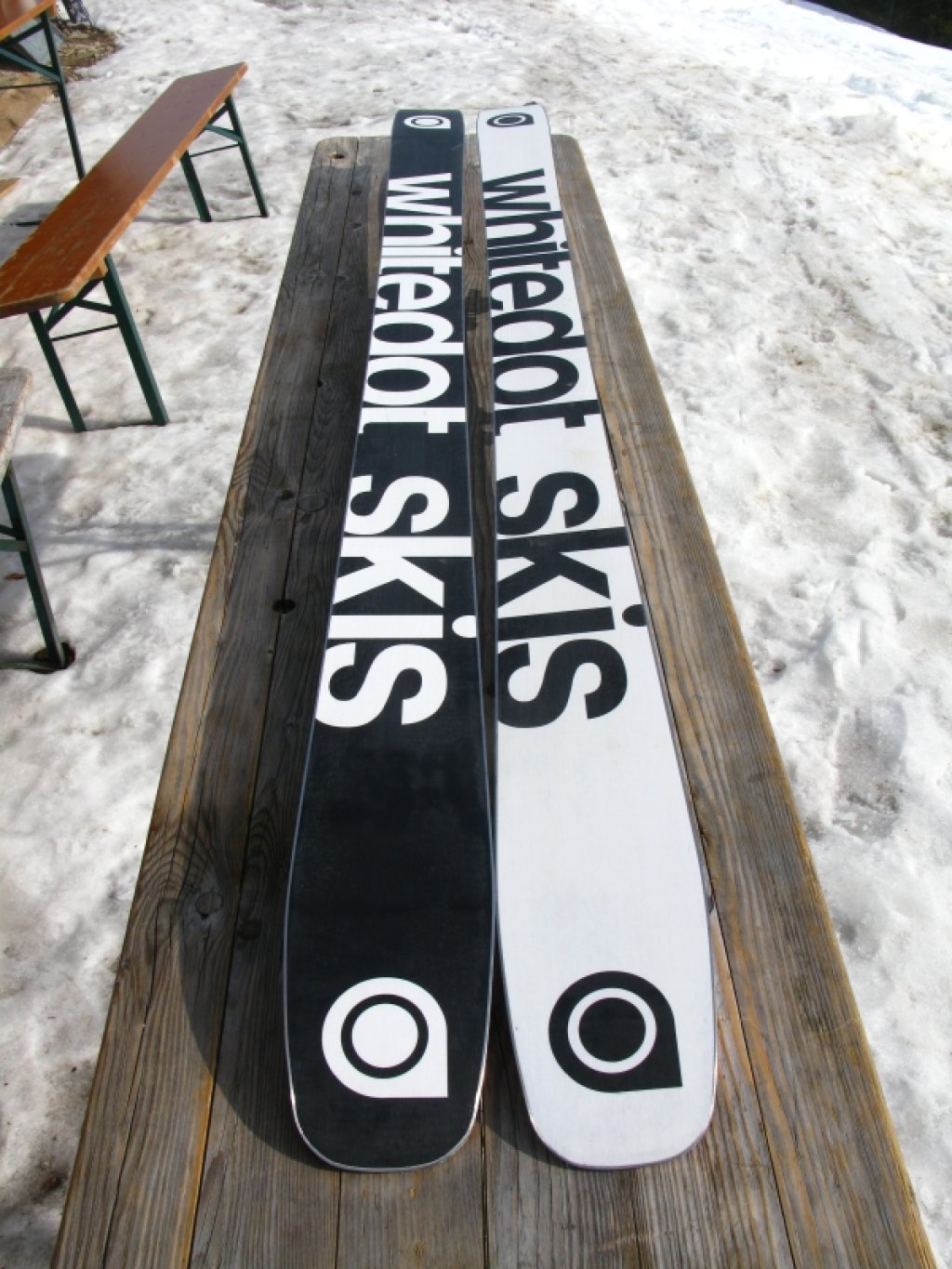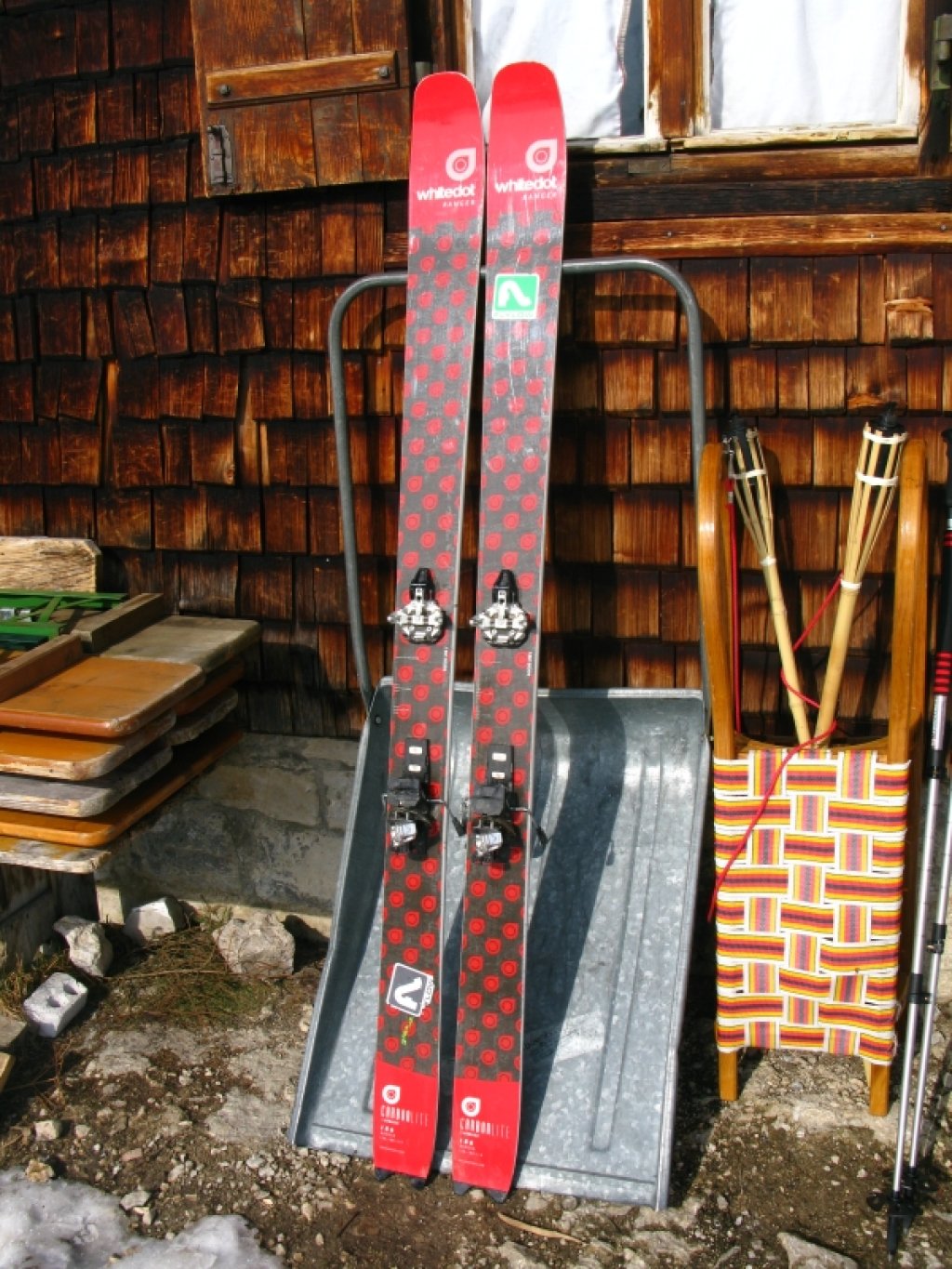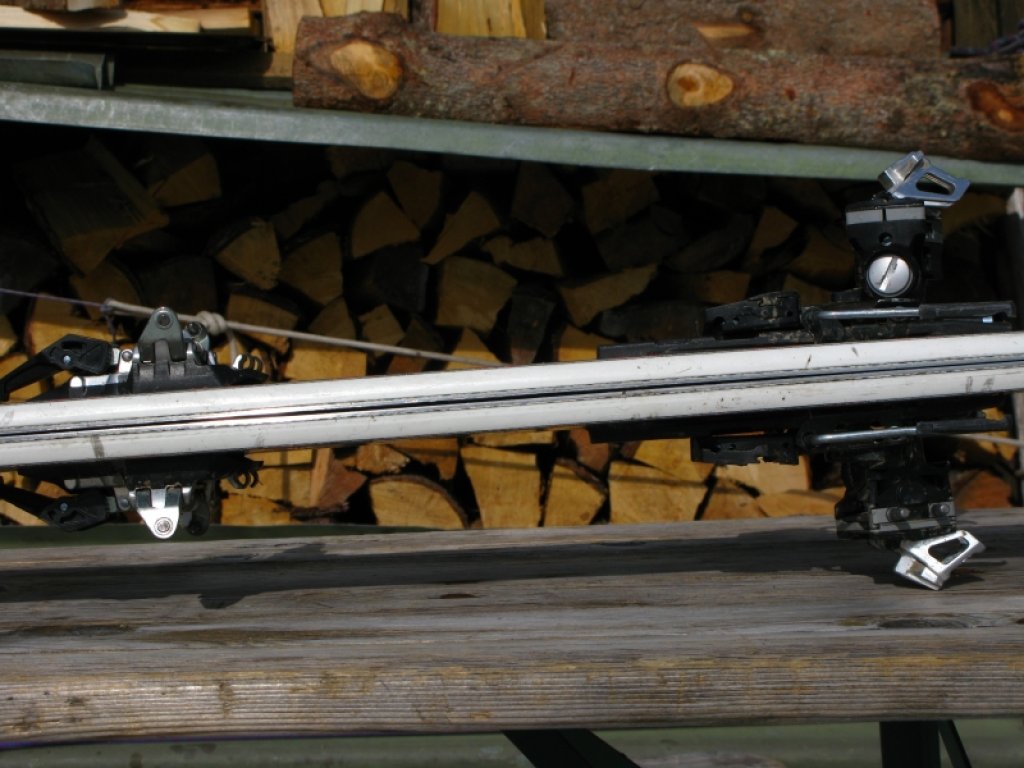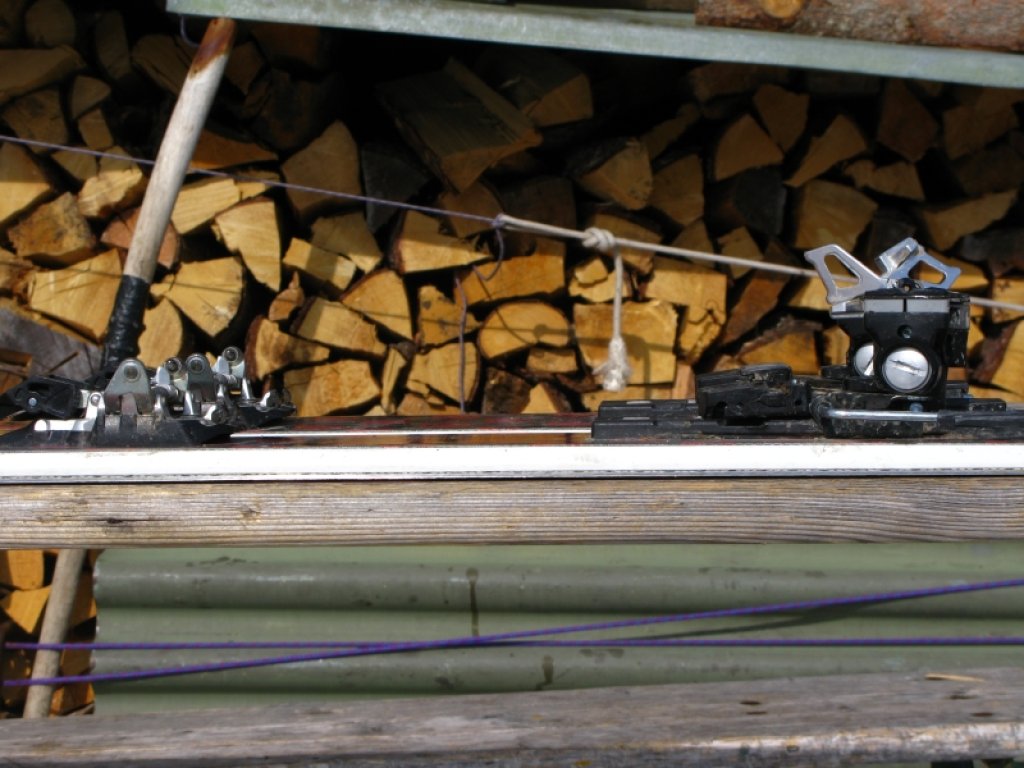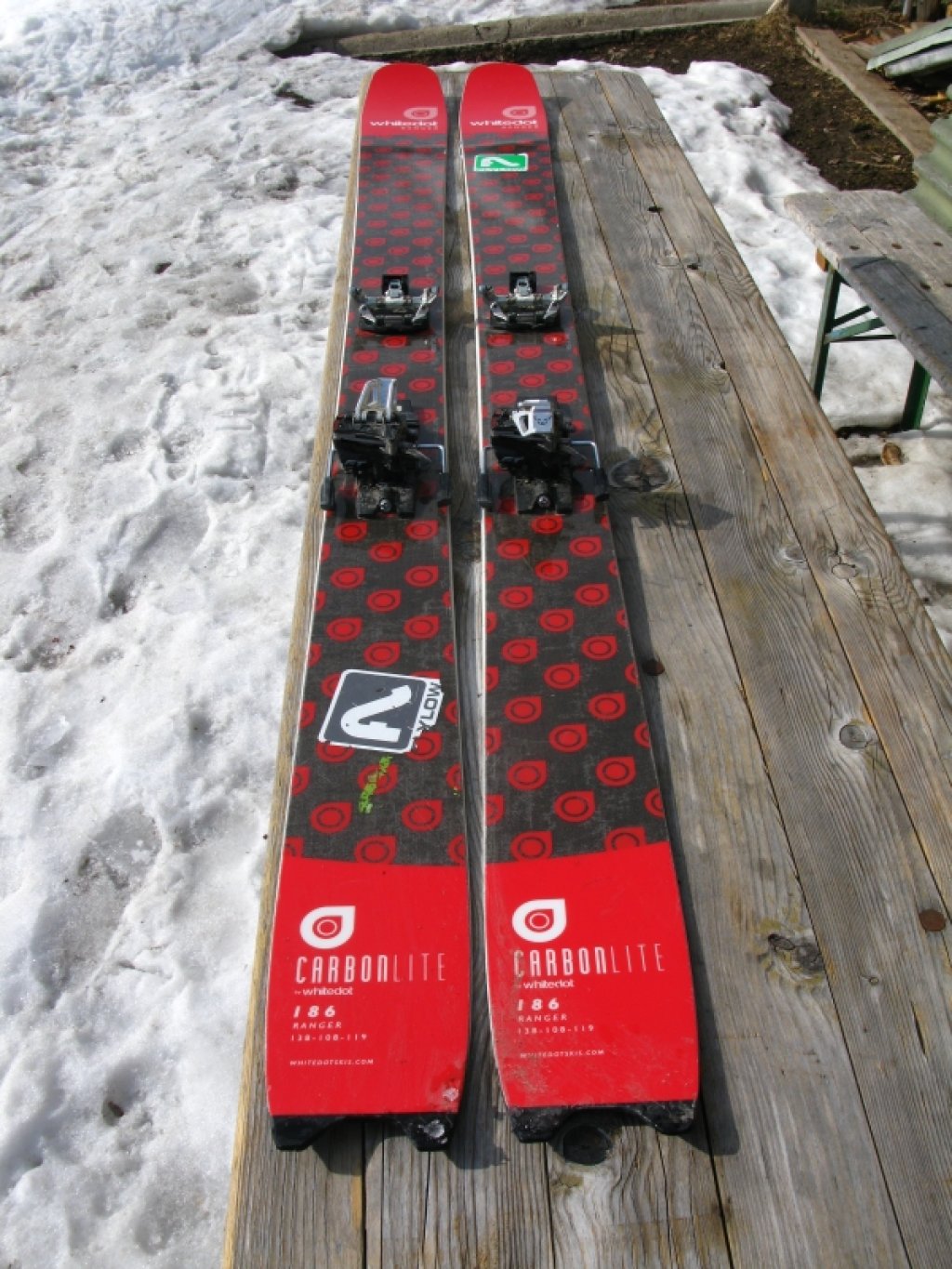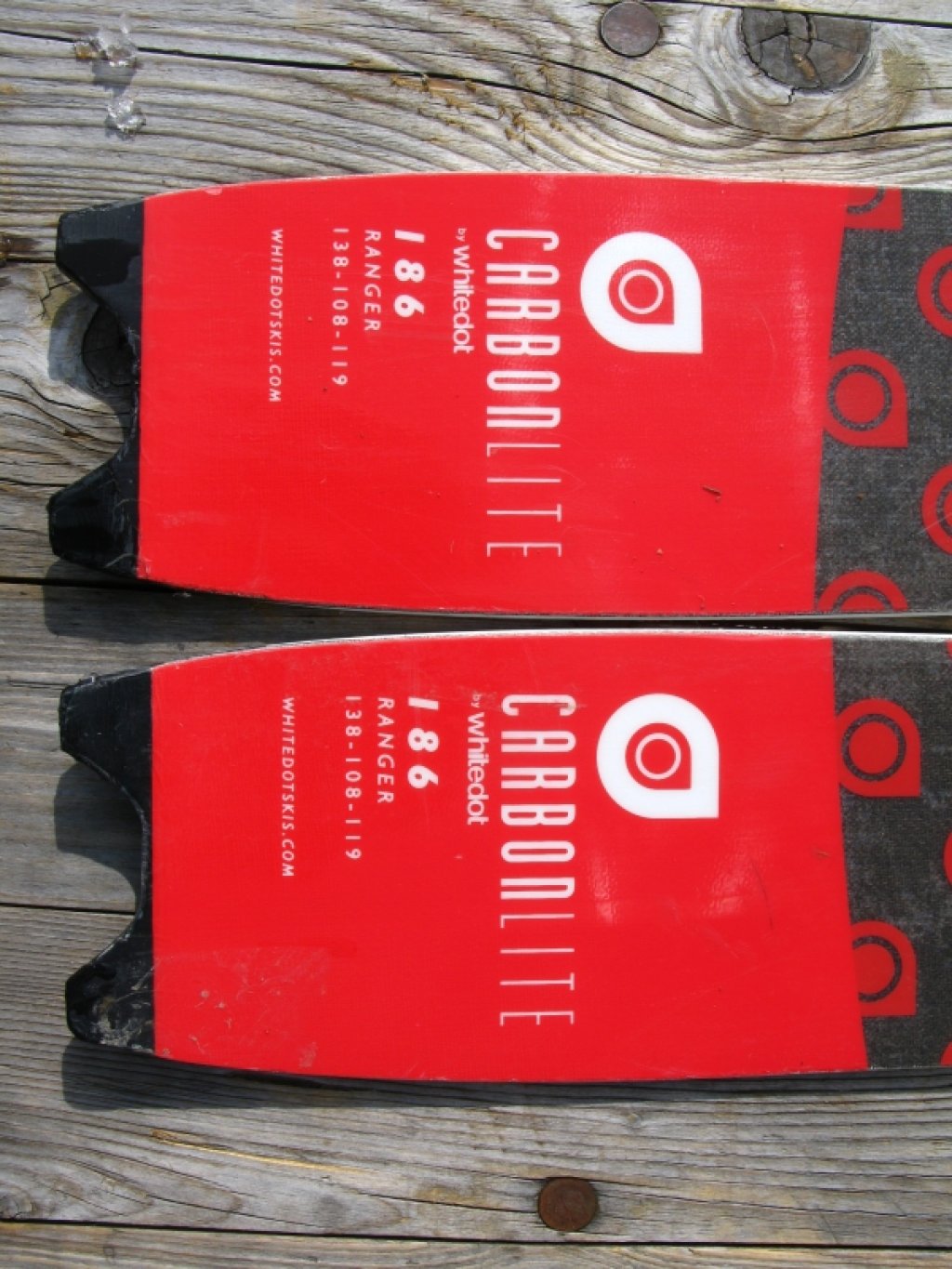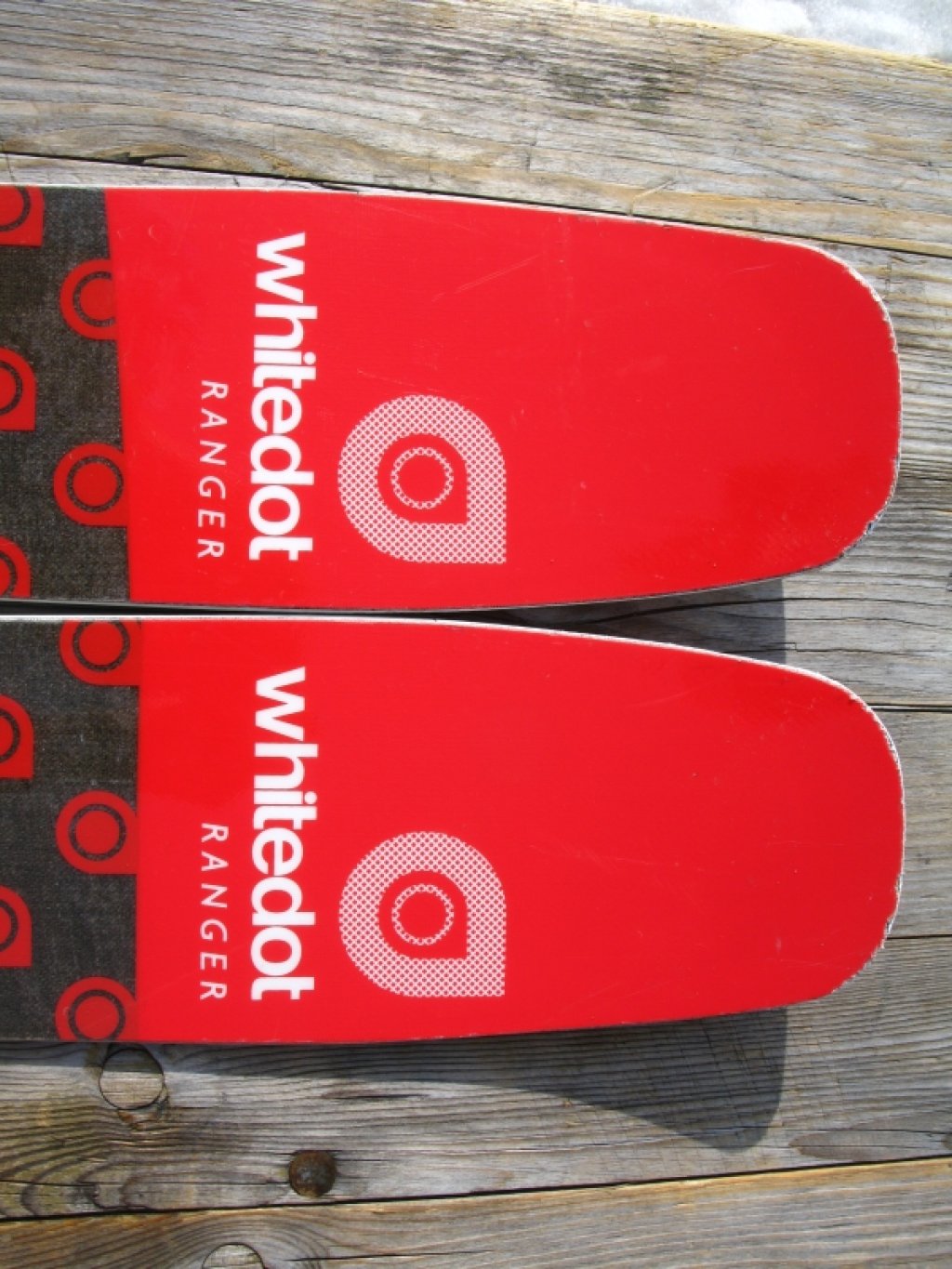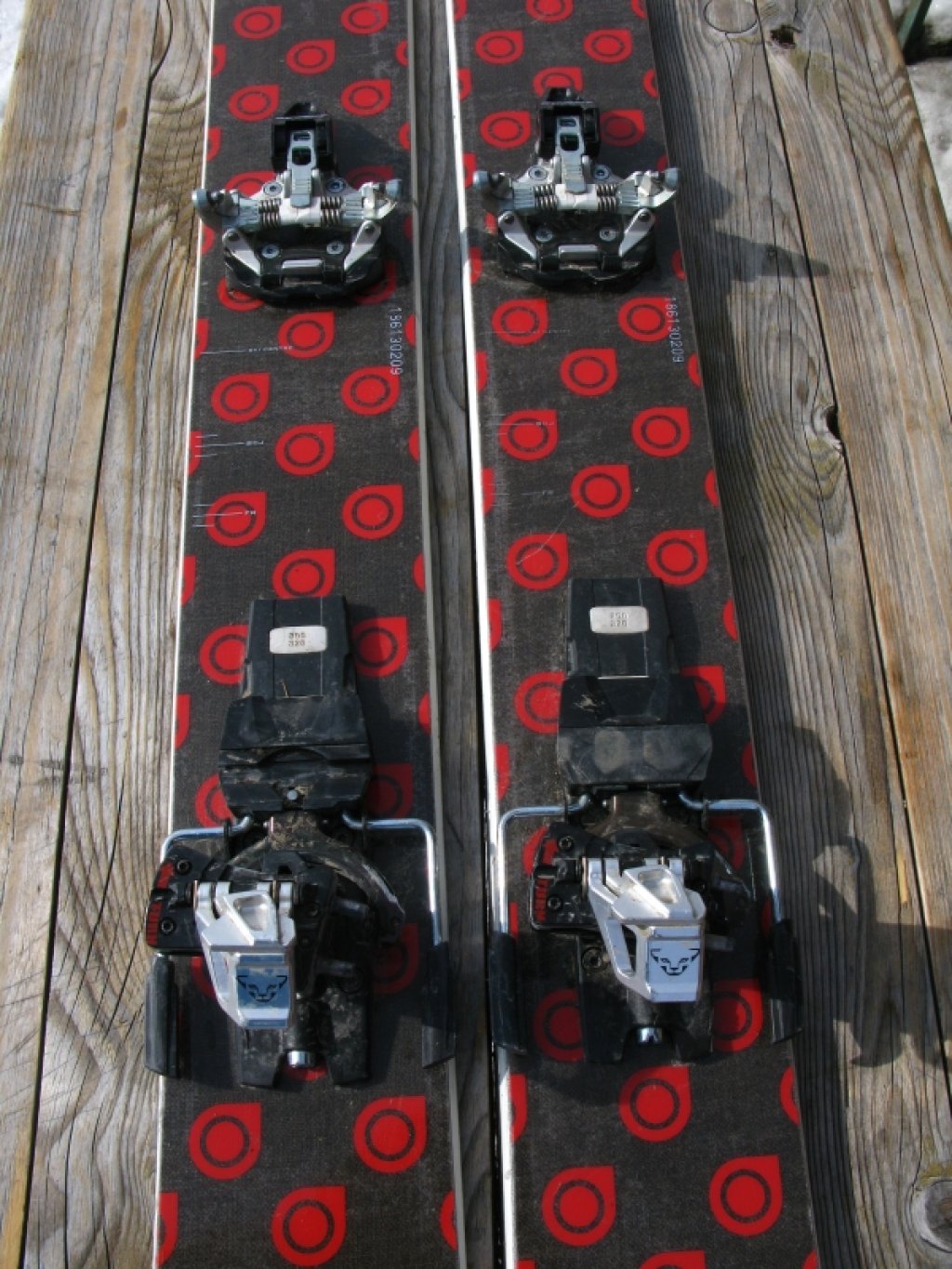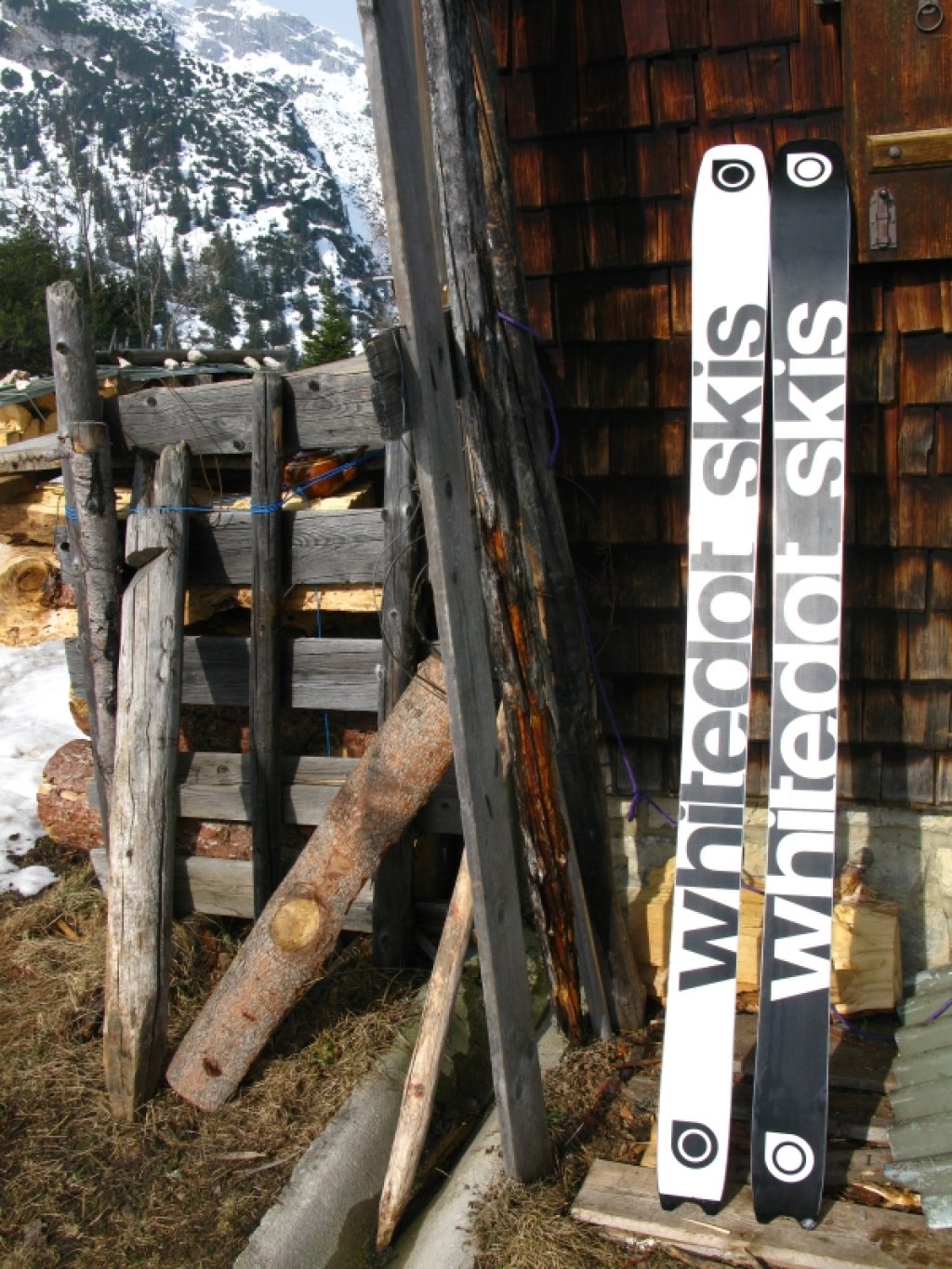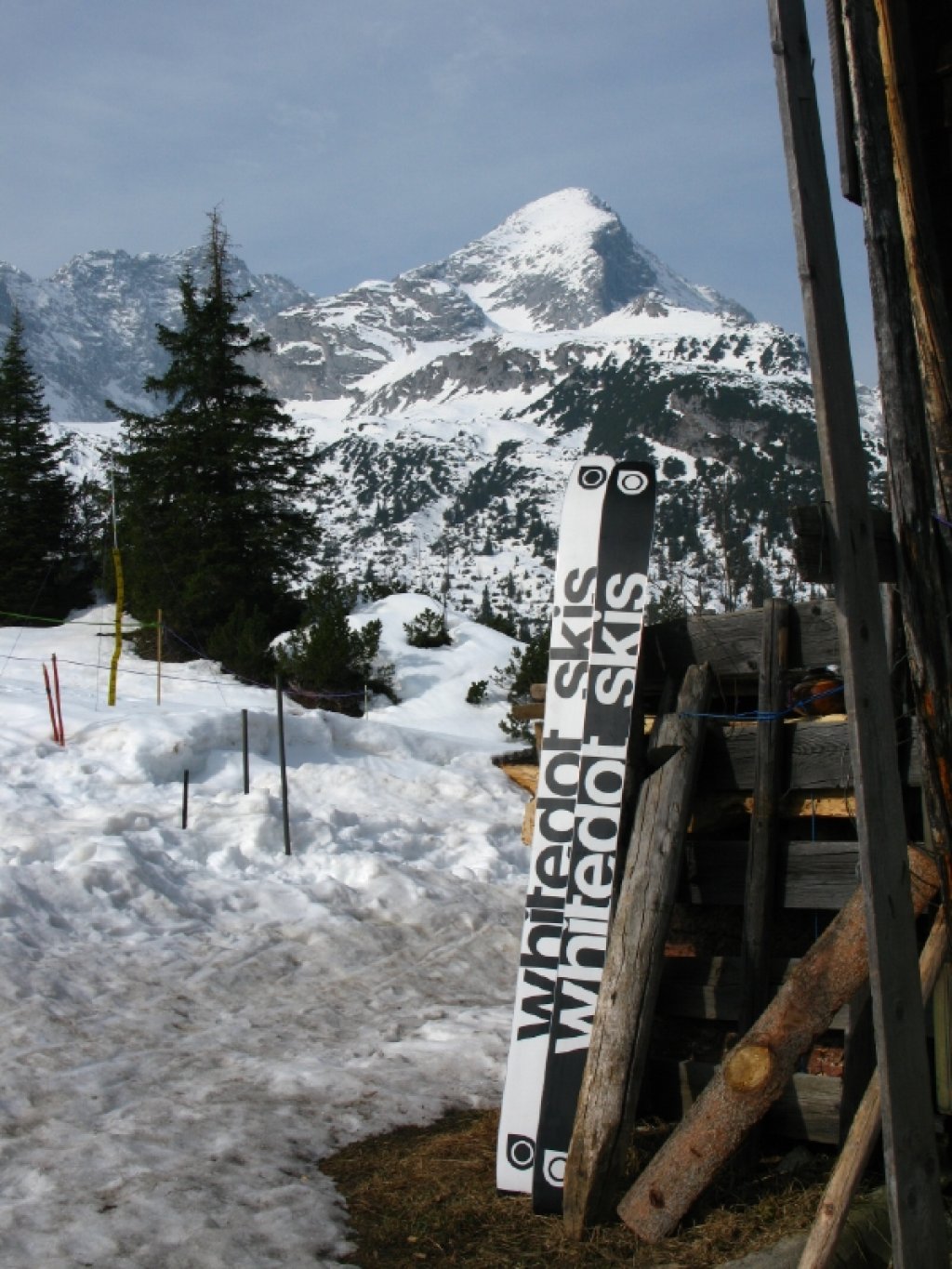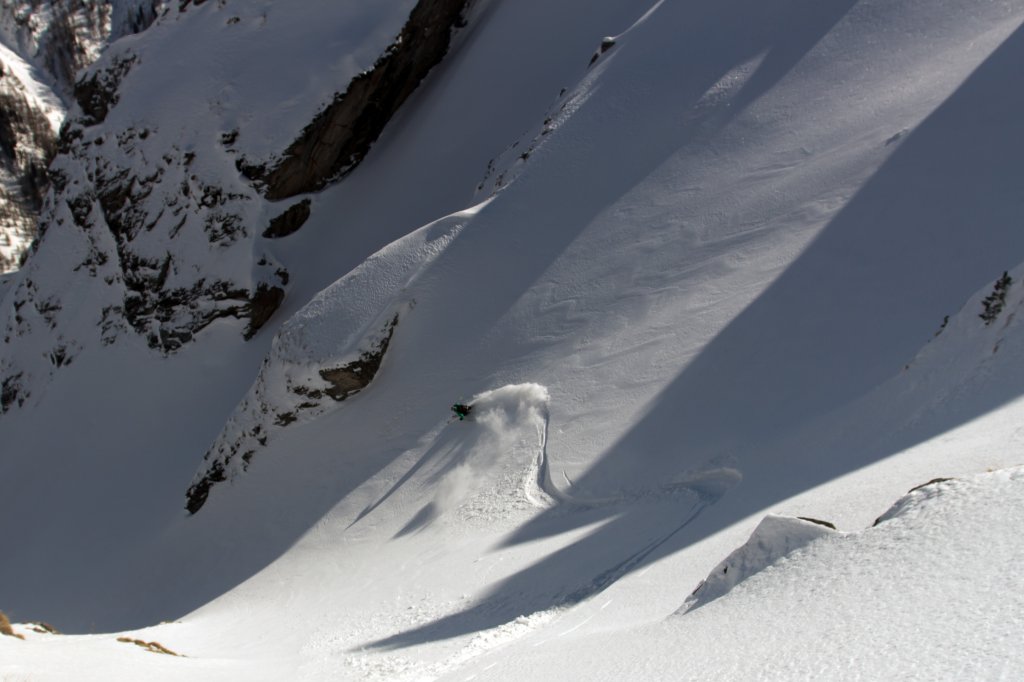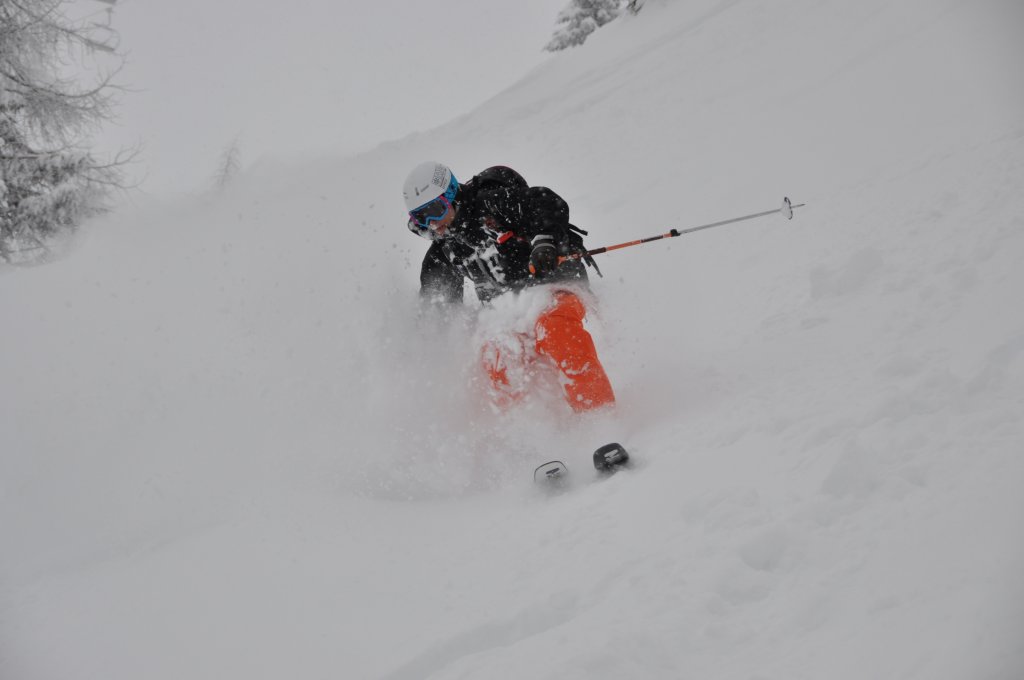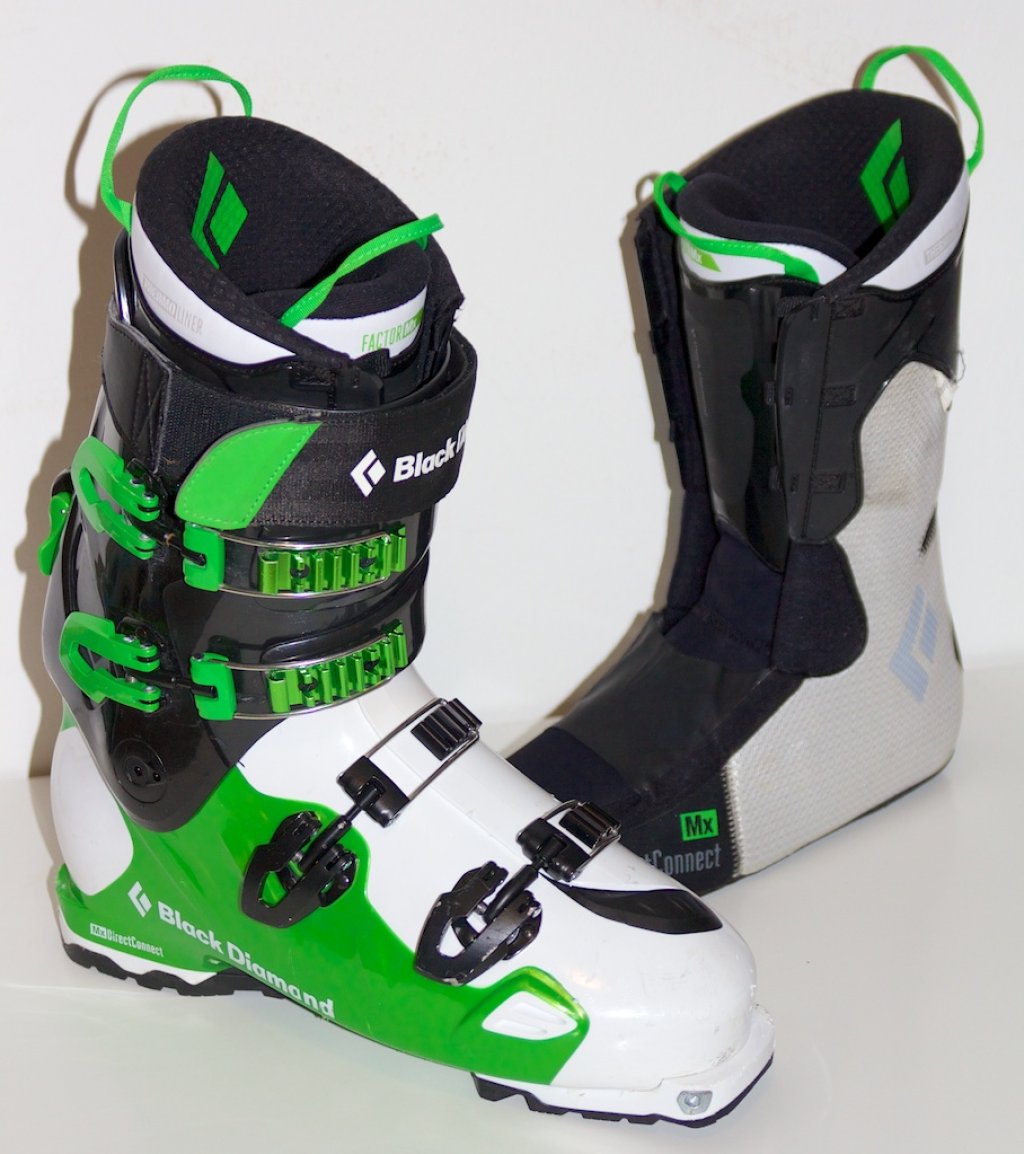Whitedot is one of the ski manufacturers that emerged out of a conviction that the existing material could be improved. A few enthusiastic friends of skiing got together and developed the first prototypes. That was several years ago, but the brand is still relatively unknown in German-speaking countries. Without good reason, in my opinion, as the ski manufacturers from the 'white dot' now know how to impress with their appealing design and innovative ski shapes. This time in the practical test of the Ranger Whitedot CarbonLite.
First impression and design
Not much needs to be said about the design of the Whitedot skis: simple and appealing, as they have been for all the years since the company was founded. The only difference is that the dot on all CarbonLite models is no longer white, but colorful (red in the case of the Ranger). Much more important, however, is the impression after lifting the ski for the first time: damn light for the width! The mounted Dynafit Radical FT does the rest, of course, but one wonders whether it is even possible to ski seriously with such a lightweight! More on this later. About the weight: The manufacturer does not provide any details. With the bindings fitted (weighing exactly 599 grams according to the manufacturer), the remaining weight is approx. 1780 grams (see pictures), although a few grams of slush have certainly been left behind since the last spring tour. Let's assume 1700 grams per ski, which is definitely a fighting weight for the given width. But watch out! The Ranger CarbonLite wouldn't be the first lightweight ski to fail a practical test...
The typical Whitedot sidecut with its almost angular nose and long, wide-cut tip immediately catches the eye. And, of course, the implied dovetail at the end of the ski, which, on closer inspection, was probably only shaped in this way for a particularly reliable attachment of the skins. The binding also appears to be mounted very far back - the recommended freeride mount is 8.5 cm behind the actual center of the ski. The comparison with other skis then also shows that the eye was not deceived and the ratio of nose to waist length is greater than usual.
Test conditions, binding and comments on the tester
The test conditions were very variable: wind-pressed old snow, the freshest powder snow, heavy, wet spring snow, broken harsh snow, icy steeps and rutted glaciers - including the usual stone contacts and meadow mud slides this season. I also like to test off-piste skis a few times on the piste in different conditions (frozen to slushy). I mainly used the Ranger CarbonLite on tours of various lengths. From time to time, however, I also ski in changeable conditions in the area so that I can get a few meters of downhill skiing together for the test. I'm 180 cm tall and weigh 82 kg and ski quite athletically. I actually prefer heavier skis and test lightweights with a keen eye. A Dynafit Radical was mounted on the test ski (minus 8.5 centimeters to the actual ski center). The ski has been skied on around 25 days so far and used for a number of tours from 200 to 1600 vertical meters. Always with the 2013/2014 Black Diamond Factor as a ski boot.
Weight on the ascent and versatility on the descent are convincing across the board
"The Ranger is the ideal choice for all backcountry conditions and terrains. It was developed to explore the furthest corners of a glacier, ski the steepest slopes and glide over powder fields with ease." This is how the heavier Ranger is advertised by the manufacturer. Its lighter brother, the Ranger CarbonLite, is described as follows: "Conquering the backcountry with the Ranger CarbonLite is made even easier by the weight reduction of half a kilo per pair, which is the equivalent of 3 kg in your backpack!
Although I did not yet know the proportionality of weight 'on the foot' to weight 'on the back'; taken together, this sounds like the all-round ski that many ski manufacturers have been looking for for years. One thing up front: the Ranger CarbonLite comes really close. With its width under the binding (108 mm), its (slight) camber and the well-balanced ratio of stiffness and flex, the Ranger CarbonLite can really handle any downhill situation. In contrast to other lightweights, you can really do something with it. It starts to flutter much later and radiates a smoothness that is otherwise only known from heavyweight, wide freeride slats.
It seems as if lightweight construction is increasingly becoming the decisive construction of the one-ski-quiver ski. The edge hold of the Ranger CarbonLite is amazingly good and carving on the piste in particular is a lot of fun (provided there is room for the 28.0 m radius). It is only reluctant to be pressed into a short edged turn, but this is also perfectly feasible. Short drifted turns, on the other hand, are a real joy. Because the binding is so far back in relation to the ski, the ski can be skied with a lot of frontal pressure without any problems and turns happily backwards after the turn is initiated. A lot of pressure on the tip of the ski has never led to the nose diving away unexpectedly, even in deep snow. Even in deep, light fresh snow, the tip of the ski creates enough lift and floats cleanly. Even in rougher snow or a light layer of hardpack, you don't get the feeling that it's getting rattled. Overall, the ski is very homogeneously tuned and doesn' t buckle at any point. The ratio of wood core, carbon and composite material is very good and the handling is very close to that of a conventional ski. For example, I found the restoring force to the starting position of many carbon skis to be unpleasantly strong, which always caused the tip of the ski to flutter. This is not the case with the Ranger CarbonLite. At high speeds, however, it does not provide as much smoothness.
In steep to very steep channels, the ski is very maneuverable and offers plenty of edge grip. The camber and sidecut seem to work well in such conditions. A small drawback in this terrain is the elongated ski tip. As a result, the ski is skied relatively far back and you have to find the right balance between pressure on the tip of the ski and on the tail. Nevertheless, it does not tend to overturn. Thanks to its firm tail, the ski is easy to control in many different snow conditions. I don't really need to write about the weight and the advantages on the ascent, but it makes such a big difference that it should be mentioned as a clear advantage. Of course, you also get lazy and only go out with the light poles. The people at Whitedot have done a really great job and their announcement can be fully underlined. I'm looking forward to testing the wider slats from the CarbonLite series!
Conclusion
The Whitedot Ranger CarbonLite is an absolute all-rounder. Wide (and light) enough to float well in deep snow; but it also keeps the skier on track in steep, hard passages. Both short and long turns are a joy with the Ranger CarbonLite. Once you put it on the edge, it rewards you with a very smooth ride and directional stability. The Ranger CarbonLite is also great fun on the piste in variable conditions. At high speeds and in rough conditions, however, it also reaches its limits - albeit comparatively late compared to other skis in this weight class or skiers in this weight class with skis in this weight class. The high price is the only negative factor on the test scale. Highly recommended for anyone looking for a balanced all-round freeride ski with which they can also go on longer tours.
Advantages & disadvantages
+ Extremely light
+ Very good control
+ Good float
+ Variable range of use
- A little choppy at very high speeds in rough terrain
- High price
Detailed information
Test version: Whitedot Ranger CarbonLite in 186 cm
RRP: 976.- Euro
Available ?lengths: 166 / 177 / 186 / 195 PRO cm
Dimensions: 138 / 108 / 119 (166, 177, 186 cm), 142 / 110 / 124 mm (195 PRO cm)
Radius: 21.0 / 24.5 / 28.0 / 30.5 m
Effective edge: 1240 / 1320 / 1400 / 1455 mm
Weight: not specified by manufacturer
Camber: 2 mm
Edge Angle: 1 Base / 87 Sidewall
Sidewalls: ABS
Base: 1.2 mm ISO 7200 High Speed Precision Sintered
Core: Full Tip - Tail Poplar / Ash Laminate
Edge: 1.9 mm hardened Steel, 360° pre-bent Wrap-Around
Topsheet: ISO Foil, Screen Printed & Twice Lacquered
Construction: Carbon Fibre / Flax / Carbon-Kevlar Stringers / Dry Weave Binding Retention Plate / Rubber Foil Dampening Tape / Carbon-Aramid / Carbon
Further information from the manufacturer can be found here
